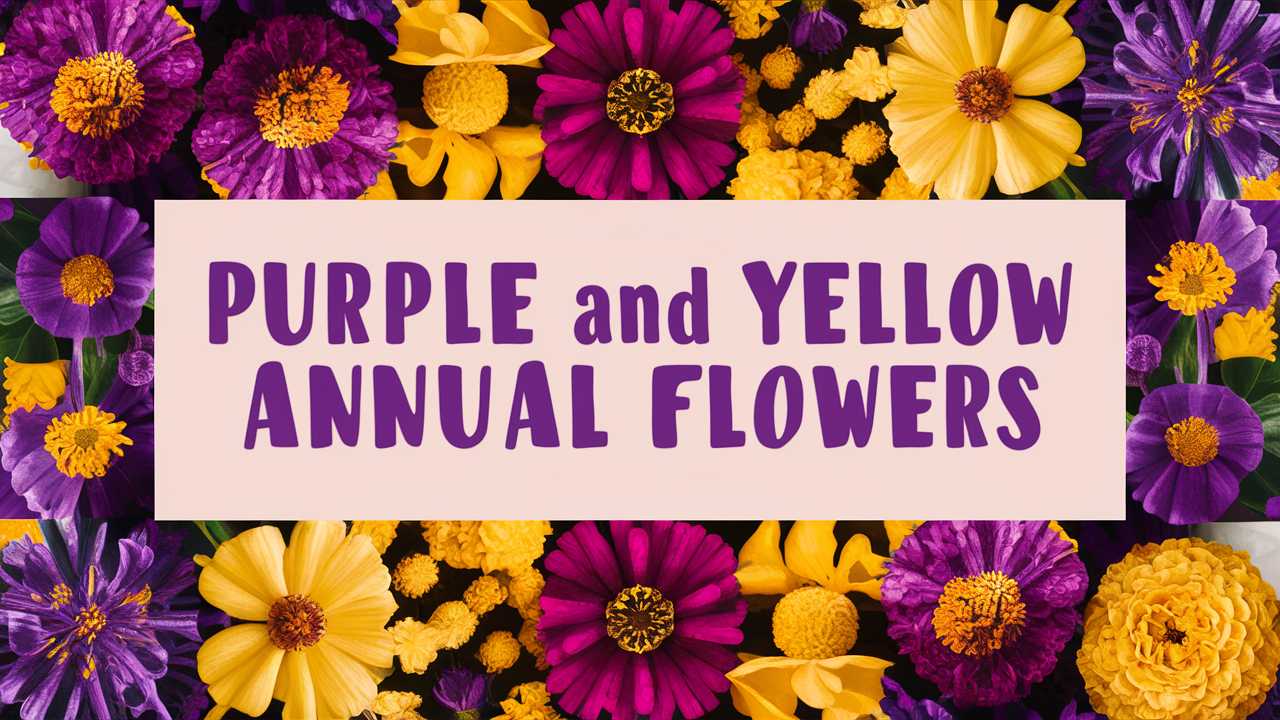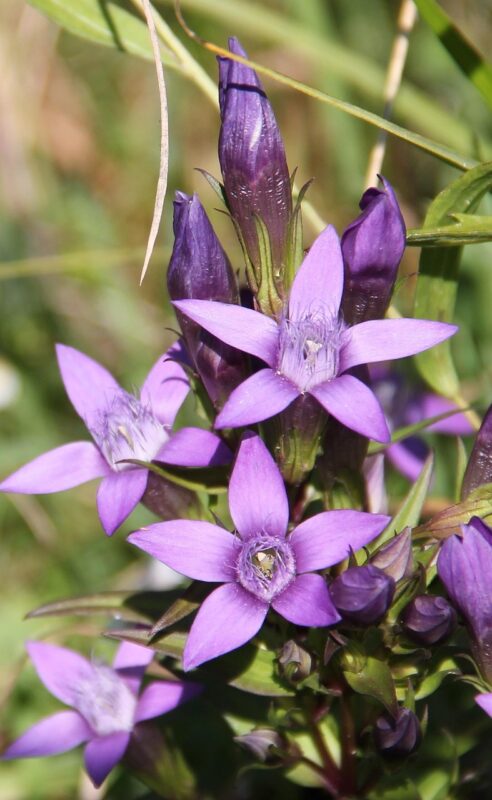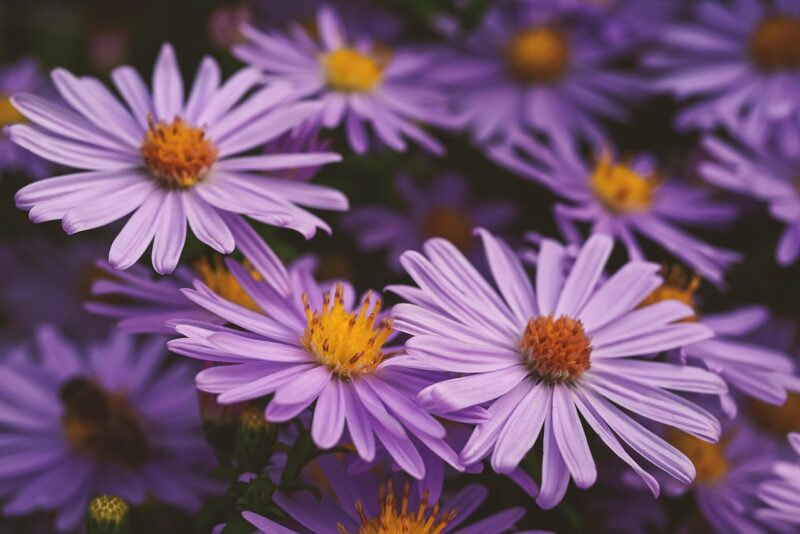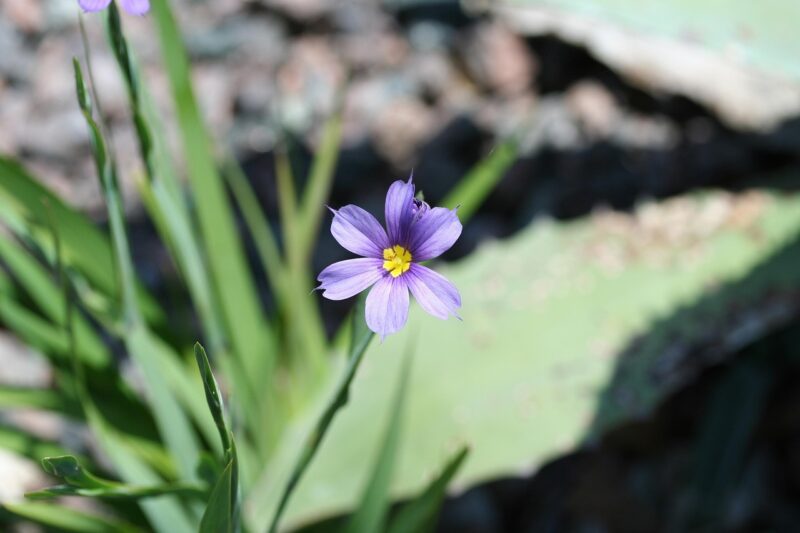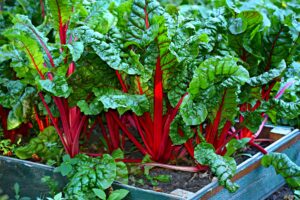In this post, we’ll dig into a selection of stunning purple and yellow flowers, exploring their unique characteristics, how to care for them, and the best ways to incorporate them into your garden design.
Dwarf Iris

The Dwarf Iris is a gem in the world of spring blooms, featuring enchanting purple petals that bring a splash of color to any garden. With a height of just 6 to 12 inches, these petite flowers are ideal for rock gardens and border edges. Dwarf Irises prefer well-drained soil and a sunny location, allowing them to flourish and produce their spectacular blooms. They typically flower from mid to late spring, showcasing a delightful array of purples, blues, and even yellows, depending on the variety.
As a resilient perennial, Dwarf Iris requires minimal care beyond routine watering during dry spells and occasional fertilization. Their compact size makes them suitable for container gardens as well, creating beautiful arrangements when paired with yellow flowers like daffodils or marigolds.
Pickwick Crocus
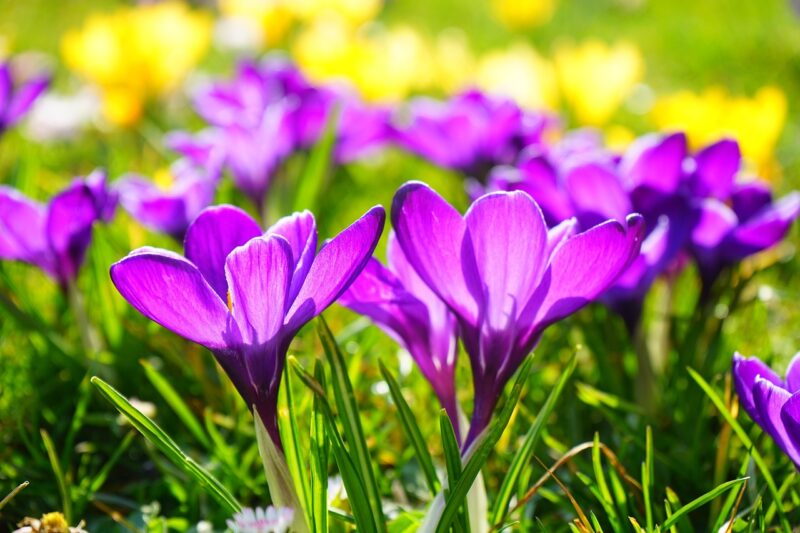
The Pickwick Crocus is a captivating flower that brings a touch of early spring magic. With its striking purple blooms adorned with white veins, this crocus variety is a favorite among gardeners. They typically bloom in March and April, transcending their surroundings with a cheerful presence.
These flowers are hardy and thrive in well-drained soil, preferably in full sun to partial shade. They’re excellent for naturalizing in lawns and can create an enchanting carpet of color as they multiply over the years. Pairing Pickwick Crocus with early-blooming yellow flowers such as forsythia can create a stunning contrast that heralds the start of the gardening season.
Freefall Purple Wing Pansy
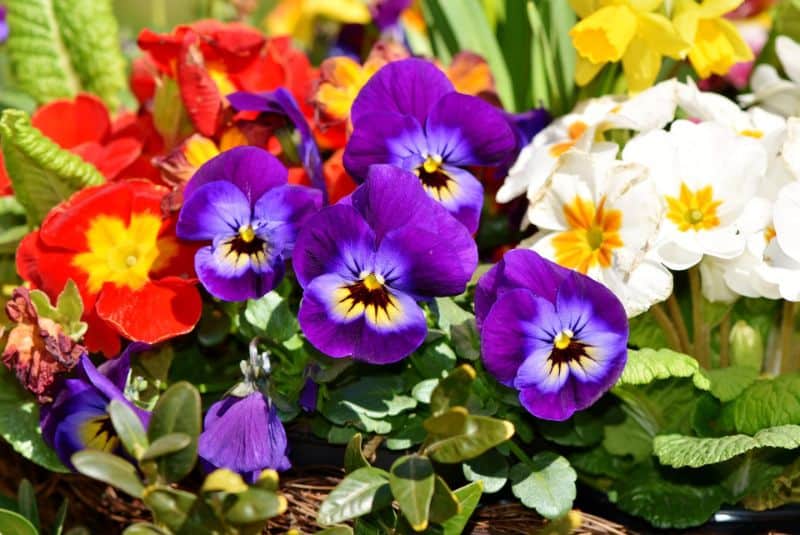
With their vibrant purple hues and unique wing-like petals, Freefall Purple Wing Pansies bring a striking visual element to gardens and containers. These annuals are particularly beloved for their ability to bloom during cooler weather, providing color in the early spring and fall.
Freefall Pansies are quite versatile; they thrive in a variety of soil types, though well-drained soil yields the best results. Regular deadheading promotes prolonged blooming, while keeping the soil moist helps these flowers maintain their vitality. Planting them alongside bright yellow violas not only enhances their beauty but also creates a cheerful, inviting atmosphere.
Bittersweet Nightshade

While often overlooked, the Bittersweet Nightshade offers a lovely mix of purple flowers and bright yellow berries that can add an exotic touch to your garden. This perennial vine produces small, tubular purple flowers that flower in summer, followed by the formation of stunning yellow-orange berries in the fall.
Caring for Bittersweet Nightshade requires some caution, as all parts of this plant are toxic if ingested. However, when planted thoughtfully, it can be an attractive addition to fences, trellises, or garden walls. The juxtaposition of the purple blooms against the playful yellow berries creates a visually alluring display.
Purple Profusion
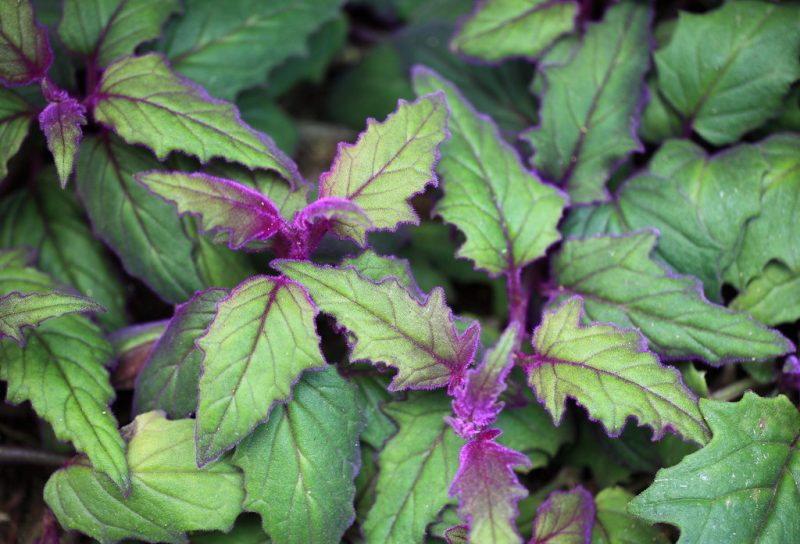
Purple Profusion is an eye-catching variety of atex, a plant that excels in producing clusters of small purple flowers. These flowers bloom profusely in garden beds, borders, and even containers, creating a dreamy and colorful tapestry against other garden plants.
This hardy annual is drought-tolerant and thrives in full sun, making it perfect for low-maintenance gardens. To enhance its beauty, consider planting Purple Profusion alongside cheerful yellow zinnias. This combination promises a mesmerizing visual effect that is sure to attract pollinators like bees and butterflies.
Magic Lantern Lupine
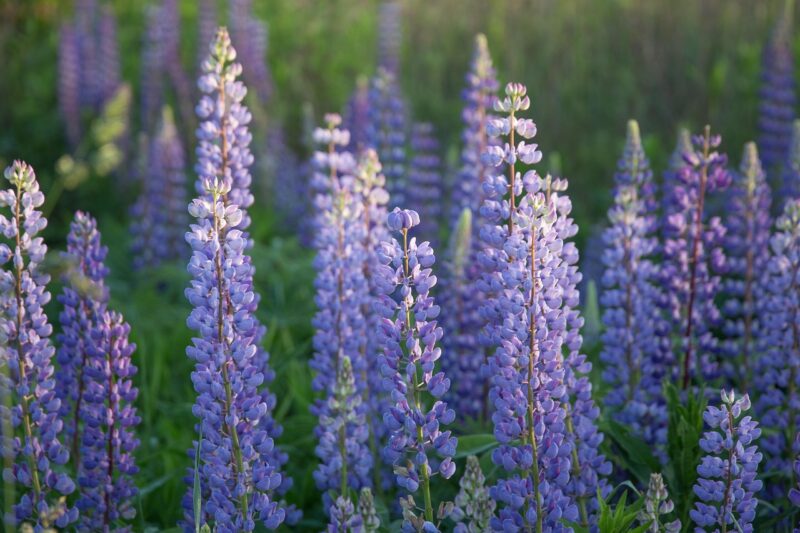
Magic Lantern Lupine is a striking flower known for its dense spikes of purple blooms. This annual plant creates a stunning focal point in any garden, with its ascending trumpet-like flowers resembling lanterns lit against the sunlight.
Lupines prefer well-drained soil and a sunny position. With a bit of extra attention to watering during dry spells, they can flourish beautifully. When combined with yellow blooms like Coreopsis or yellow daylilies, the visual impact is nothing short of spectacular, providing a bold color contrast that invigorates landscapes.
Pasque Flower

The Pasque Flower, or Anemone patens, is a unique beauty that boasts soft, purplish flowers adorned with silky hairs. This perennial flower is one of the first to bloom in spring, often emerging just as snow melts away.
Pasque Flowers thrive in well-drained, sandy soil and prefer full sun conditions. They are particularly well-suited for rock gardens or naturalized settings. Their delicate appearance beautifully complements spring-blooming yellow plants like the yellow tulip or daffodil, creating stunning scenes in gardens.
New England Aster
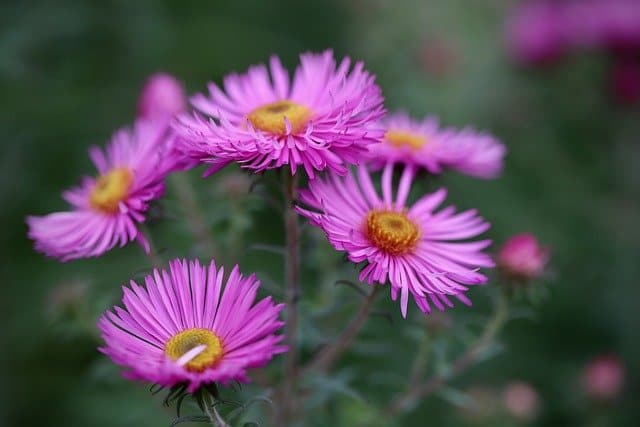
The New England Aster is a showstopper in the fall garden. Its rich purple flowers bloom en masse, attracting an array of pollinators and making a lasting impact with their vibrant hues. This perennial plant flourishes in full sun and has a preference for well-drained soil.
It can reach heights of up to 4-5 feet, making it an excellent choice for backgrounds in borders or as a focal point in wildflower gardens. Pairing New England Asters with goldenrods or yellow coneflowers provides an autumn palette filled with warmth and depth, enticing butterflies and bees to visit your garden before winter arrives.
Morning Glory

With its iconic funnel-shaped blooms, the Morning Glory is adored for its vivid purple flowers that bloom in the morning sunshine. These fast-growing annuals can quickly cover trellises, fences, and arbors, providing lush green foliage alongside their striking flowers.
Morning Glories thrive in full sun and produce more blooms when given space to grow. Be aware that they can become invasive if not properly managed. When combining Morning Glories with yellow sunflowers, the result is a visually compelling garden space that evokes feelings of joy and warmth.
Purple Cloud Aster

The Purple Cloud Aster is an exquisite flower that thrives in garden beds, adding an ethereal touch with its small purple blooms. This perennial variety is known for its long-lasting blooms, which can last until the frost arrives, providing color when many other flowers have faded.
Purple Cloud Asters prefer full sun and adaptable soil, but they thrive best in well-drained environments. When paired with yellow-colored flowers like black-eyed Susans or other golden flowers, the contrast creates a stunning display, perfect for late-season garden arrangements.
Prairie Gentian
The Prairie Gentian, with its rich purple flowers, exudes charm. This perennial plant blooms in late spring to early summer and can withstand drought conditions, making it an excellent choice for low-maintenance gardens.
These plants thrive in sunny locations with well-drained soil. Their compact growth habit makes them ideal for borders and containers. Combine them with cheerful yellow daisies for a harmonious blend that draws the eyes and inspires an appreciation of nature’s beauty.
Dendrobium Orchid
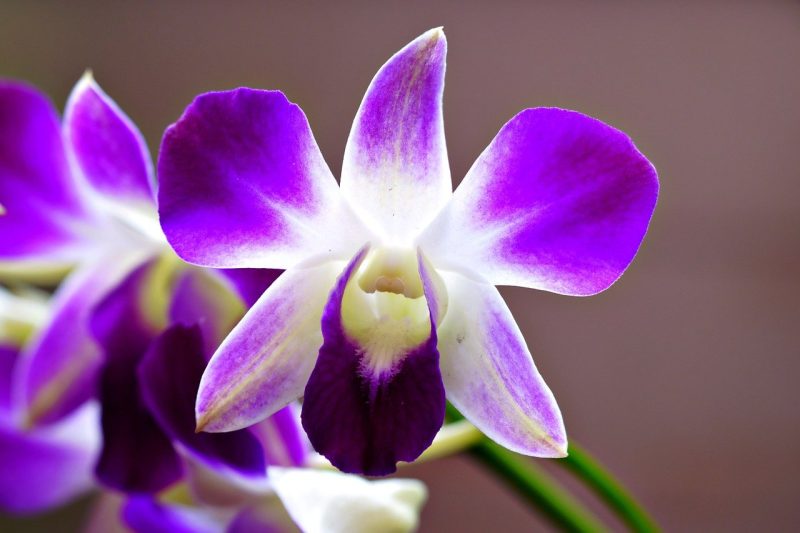
Dendrobium Orchids are striking tropical flowers that stand out with their stunning purple and yellow combinations. These delicate yet resilient orchids are perfect for indoor gardens or outdoor environments in appropriate climates.
To flourish, Dendrobiums require bright, indirect sunlight and well-draining orchid potting mixes. Their alluring appearance combined with their sweet fragrance makes them excellent in both formal and casual arrangements. Incorporating Dendrobium Orchids into your garden adds a touch of elegance, especially when paired with vibrant yellow flowers such as Echinacea.
Alpine Columbine

Alpine Columbine is a unique perennial flower known for its intricate blooms and delicate structure. The purple petals feature a soft yellow center, providing a wonderful contrast that captures the essence of spring and summer gardens.
These flowers thrive in cooler climates and prefer well-draining, sandy soil. They’re well-suited for rock gardens or alpine settings. They pair beautifully with bright yellow buttercups, creating a charming and colorful environment that can attract butterflies and other pollinators.
Purple Burst Aster
The Purple Burst Aster is an impressive late-blooming perennial that fills gardens with rich purple flowers that almost shimmer in the sunlight. This Aster variety thrives in full sun and well-drained soil, making them hardy and easy to grow in various garden settings.
These flowers serve as an excellent backdrop for late-summer blooms, especially when planted alongside golden yellow plants like Helianthus (sunflowers). This combination creates a riot of color, drawing the attention of bees, butterflies, and garden enthusiasts alike.
Adrian Primrose
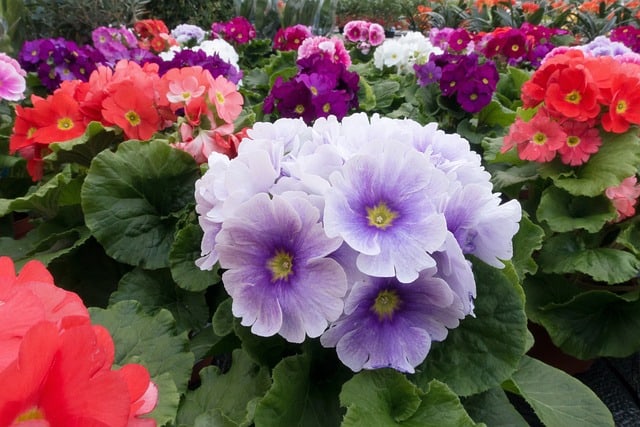
The Adrian Primrose is a perennial beauty with deeply lobed leaves and stunning purple blooms that brighten shaded areas beautifully. These flowers are generally a delight to grow, thriving in moist, well-draining soil where they can get part sun to full shade.
Adrian Primroses bloom in early spring, providing lasting color before the summer heat arrives. When planted with cheerful yellow flowers, like primrose or daylilies, they create a whimsical, inviting atmosphere perfect for cozy garden retreats.
Strict Blue-Eyed Grass
Lastly, the Strict Blue-Eyed Grass is a delightful plant characterized by its delicate purple flowers and striking yellow eye that demands attention. This perennial grass is ideal for garden borders or wildflower settings, where it can form charming patches of color.
Strict Blue-Eyed Grass thrives in well-drained soil and full sun, though it can tolerate some shade. It attracts pollinators and aids in creating a diverse ecosystem. This plant’s simple elegance makes it a great complement to clusters of yellow daisies or other sunny flowers, rounding off a garden filled with lively color and charm.


